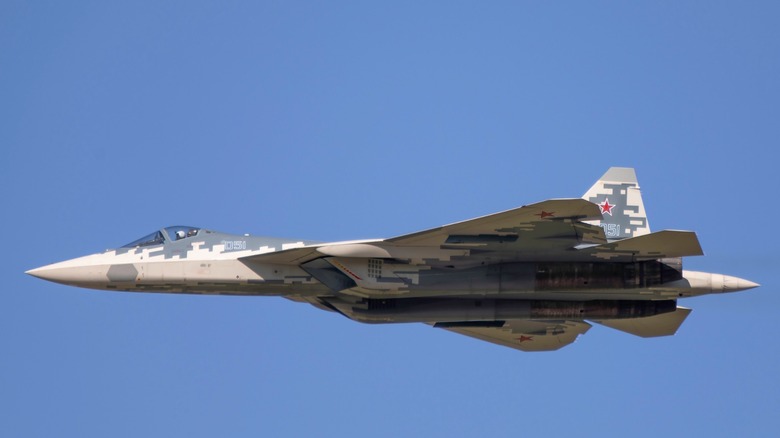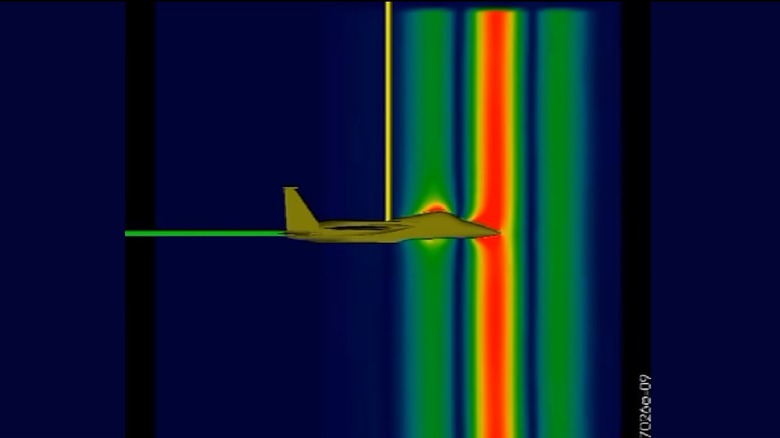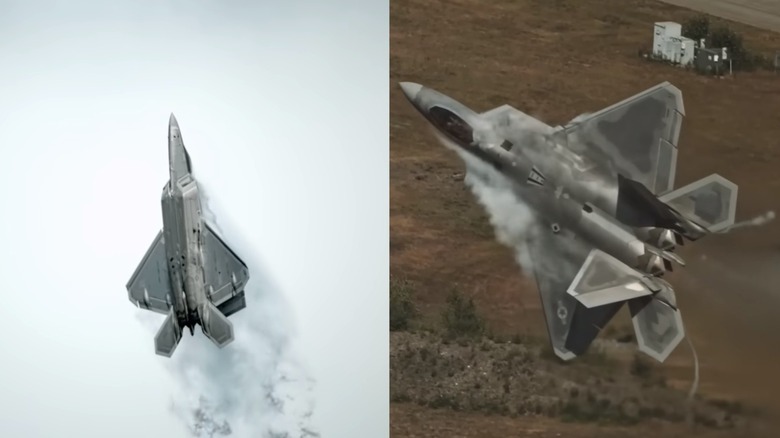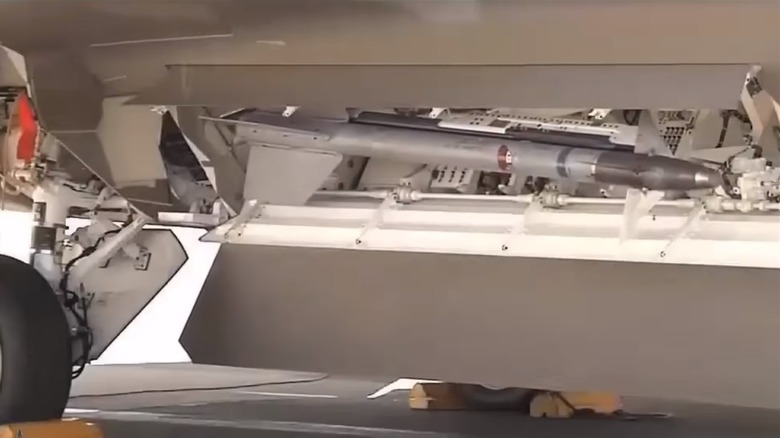F-22 Raptor Vs. Su-57 Felon: How Do They Compare?
The latest 5th-generation fighter aircraft are the most advanced and formidable the skies have ever seen. The specific models released by the U.S., Russia, and China all share some similarities that set them apart from previous generations of aircraft. Japan is also working on a futuristic next-gen fighter jet that could be ready by 2035. With upgraded electronic systems, stealth technology, enhanced radar, specially constructed frames designed to handle unprecedented maneuverability, and dry thrust supersonic capability, they are a modern engineering marvel.
While it's easy to contrast 5th-generation fighter jets with earlier iterations, what about the differences within the latest generation itself? The high-profile and oldest 5th-generation model, America's F-22 Raptor, against the mysterious Russian Su-57 Felon proves an exciting matchup. The F-22 comes out ahead in terms of units made, operational history, stealth abilities, top speed, and maneuverability. However, America's Raptor aircraft isn't without faults, as evidenced by the F-22's biggest strengths and weaknesses.
However, the Sukhoi Su-57 Felon jet can achieve a greater ceiling height and can purportedly operate at a more significant range. Some of these direct comparisons come with caveats, and Russia has been unusually quiet regarding the Su-57 Felon lately, prompting questions about its ongoing status.
The F-22 is better at stealth
One of the hallmarks of every 5th-generation fighter is their enhanced ability to hide from radar and detection. The F-22 Raptor is incredibly skilled at remaining nearly invisible to the enemy due mainly to its unique shape. There are minimal breaks around the smooth design of the Raptor's body, such as sensor gathering equipment, which could make a radar signature more apparent. The extreme aerodynamic qualities of the F-22 form a radar cross section "marble sized in frontal aspect," according to NPS.edu.
The Su-57, on the other hand, is much weaker in stealth and is considered by some to be in last place in the radar-avoiding category for the 5th generation. Although being the least stealthy 5th-generation fighter, it still puts the Su-57 Felon head and shoulders above any previous-generation jet.
Unlike the F-22, the Su-57 doesn't have an uninterrupted profile, with some components sticking out, like the sensor on the nose and the uncovered engines. Rather than mold the aircraft into shapes that confuse radar, Russia's Felon uses a radar absorbent layer over the aircraft's exterior. While this absorbent layer is effective, the Su-57 has a more prominent radar presence than the F-22, making it easier to detect than its U.S. rival.
The Su-57 can't outfly the elite F-22
If you recall the scene in 2022's "Top Gun: Maverick," where our hero is woefully unmatched in an old F-14 Tomcat against 5th-generation fighters, you might remember the insane physics-defying maneuverability the enemy aircraft displayed. Among every fighter jet featured in "Top Gun," the advanced enemy aircraft were Su-57 Felons, and the spiraling maneuver wasn't made up by Hollywood. But filmmakers did invent the dogfight between the Tomcat and Felon's. In reality, the F-14 would likely succumb to long-range missiles before it even knew the Su-57 enemy fighters were there.
The Russian Felon has 3D thrust vectoring technology, enabling it to pull off some unreal moves. In addition, the Su-57 also sports special extensions that are not unlike canards and enable a high degree of maneuverability. However, the U.S. F-22 Raptor is a force to be reckoned with, and the scene in "Top Gun: Maverick" would've played out much differently if you were to swap the old F-14 for a cutting-edge Raptor.
Even with the 3D thrust vectoring and canard-like extensions, the Su-57 isn't quite as maneuverable as an F-22 Raptor. The Raptor is smaller and weighs less, but it also has directional vectoring along with a similar maximum of 35,000 pounds of thrust from each of its engines. The unique design and high thrust-to-weight ratio make the Raptor one of, if not the most maneuverable planes ever made. However, the one advantage the Su-57 could possibly use against the F-22 is its superior ceiling of over 65,000 feet against the Raptors 50,000.
Su-57 better at air-to-ground attacks and thermal detection
Along with stealth and maneuverability, the arsenal of weapons each of these modern fighter jets can carry is critical when making a comparison. Regarding capacity, the Su-57 has more space in its weapon bays than the F-22. With a larger capacity, the Russian Felon can hold up to eight K77 air-to-air missiles. Conversely, the Raptor can only hold half that number of AMRAAM air-to-air missiles in its internal weapon bay.
When looking at air-to-ground capability, while the F-22 can carry a number of smaller munitions like a 1,000-pound or 250-pound bomb, it isn't an ideal choice due to limited space. The Su-57, with its superior capacity, could hold more munitions and, as a result, be more effective at air-to-ground engagements. The elite Russian fighter can be equipped with tools such as the KAB-500, a potent bomb with a penetrating warhead, and the PBK-500U Drel, a cluster bomb smart enough to identify enemies from allies.
At sea, the Su-57 can employ Kh-35U anti-ship cruise missiles that travel just 13 feet above the water for distances of up to 155 miles before making contact with their target. So, while the Raptor reigns supreme in air-to-air fighting, the Felon can adapt to both air-to-air and air-to-ground combat. Both jets come equipped with other weaponry, such as the F-22s internal M61A2 20 mm gun and the Su-57s 9A1-4071K 30mm autocannon. The Su-57 also uses an IR-guided missile system, while the F-22 relies on AMRAAM medium-range missiles.



